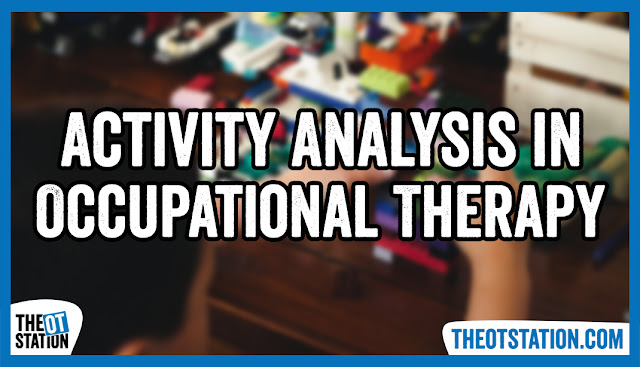As an occupational therapist, one of the most important tasks is to analyze an individual's activities of daily living to identify areas where they are struggling and determine the best course of treatment. This process is called activity analysis, and it is a crucial component of occupational therapy.
What is Activity Analysis?
Activity analysis is the process of breaking down a specific activity into its component parts to understand the skills and abilities required to complete the activity successfully. By analyzing an activity, an occupational therapist can identify areas where an individual is struggling and create an individualized treatment plan to help them achieve their goals.
The Importance of Activity Analysis
Activity analysis is a vital part of occupational therapy because it allows therapists to identify the specific skills an individual needs to develop to complete an activity successfully. By understanding these skills, therapists can design interventions that target these specific areas of need and help individuals achieve success in their daily lives.
Steps Involved in Activity Analysis
- Identify the Activity: The first step in activity analysis is to identify the activity you want to break down. It could be any task or activity that the client needs to perform.
- Observe the Activity: The next step is to observe the activity and take note of each step involved. This could include looking at the physical, cognitive, and social demands of the activity.
- Break Down the Activity: Once you have observed the activity, the next step is to break it down into smaller steps. This is where you identify the sequence of actions required to complete the task.
- Analyze Each Step: After breaking down the activity, analyze each step to identify the underlying skills required to perform that step. This could include motor skills, cognitive skills, sensory skills, or social skills.
- Determine the Client's Abilities: The next step is to determine the client's abilities and limitations in performing the activity. This could include identifying any physical, cognitive, or emotional barriers that may impact their ability to perform the activity.
- Adapt the Activity: Based on the client's abilities and limitations, adapt the activity to make it more accessible. This could include modifying the steps, using adaptive equipment, or providing additional support.
- Grade the Activity: The final step is to grade the activity to help the client progress towards independence. This involves gradually increasing the difficulty of the activity as the client's abilities improve.
Tools Used in Activity Analysis
1. ADL/IADL Assessments
2. Observation
3. Activity Analysis Worksheets
4. Cognitive Assessments
5. Environmental Assessments
Conclusion
Activity analysis is a crucial component of occupational therapy, and it helps therapists develop individualized treatment plans to help their clients achieve their goals. By understanding the steps involved in activity analysis and the tools used, you can gain a better understanding of the process and the importance of occupational therapy in improving daily function.

